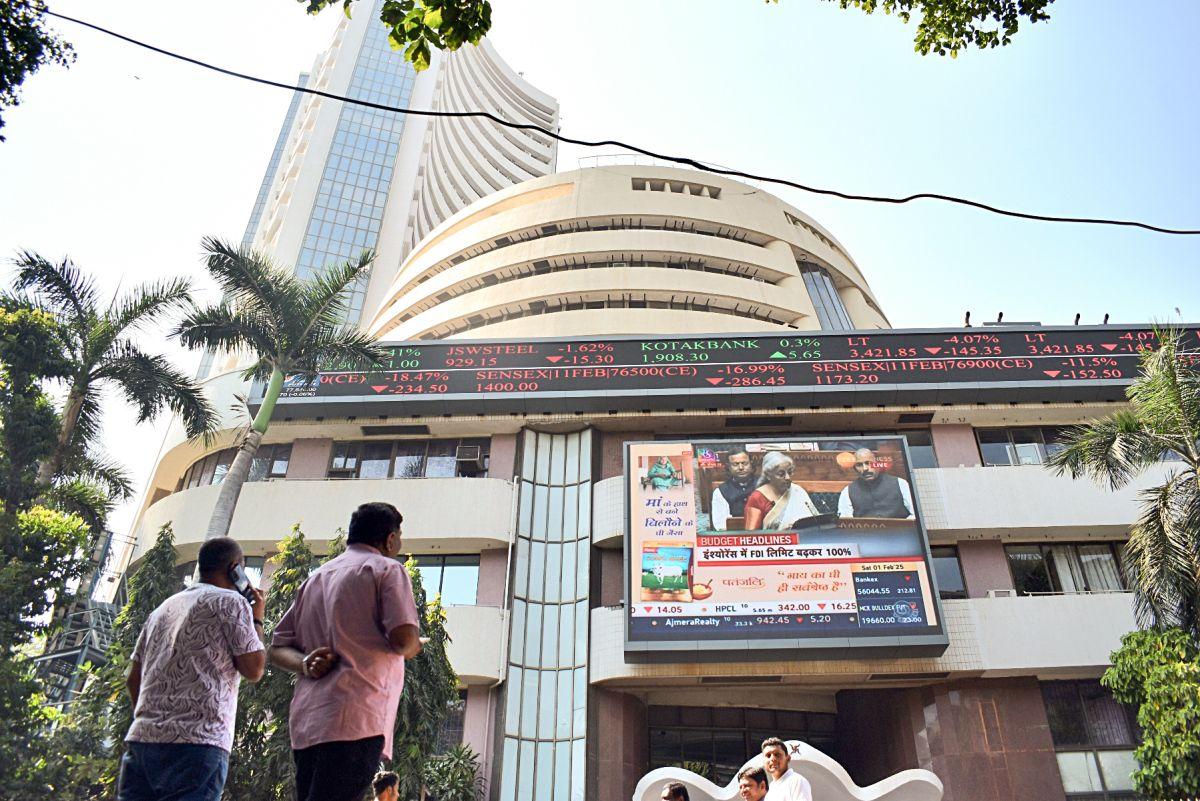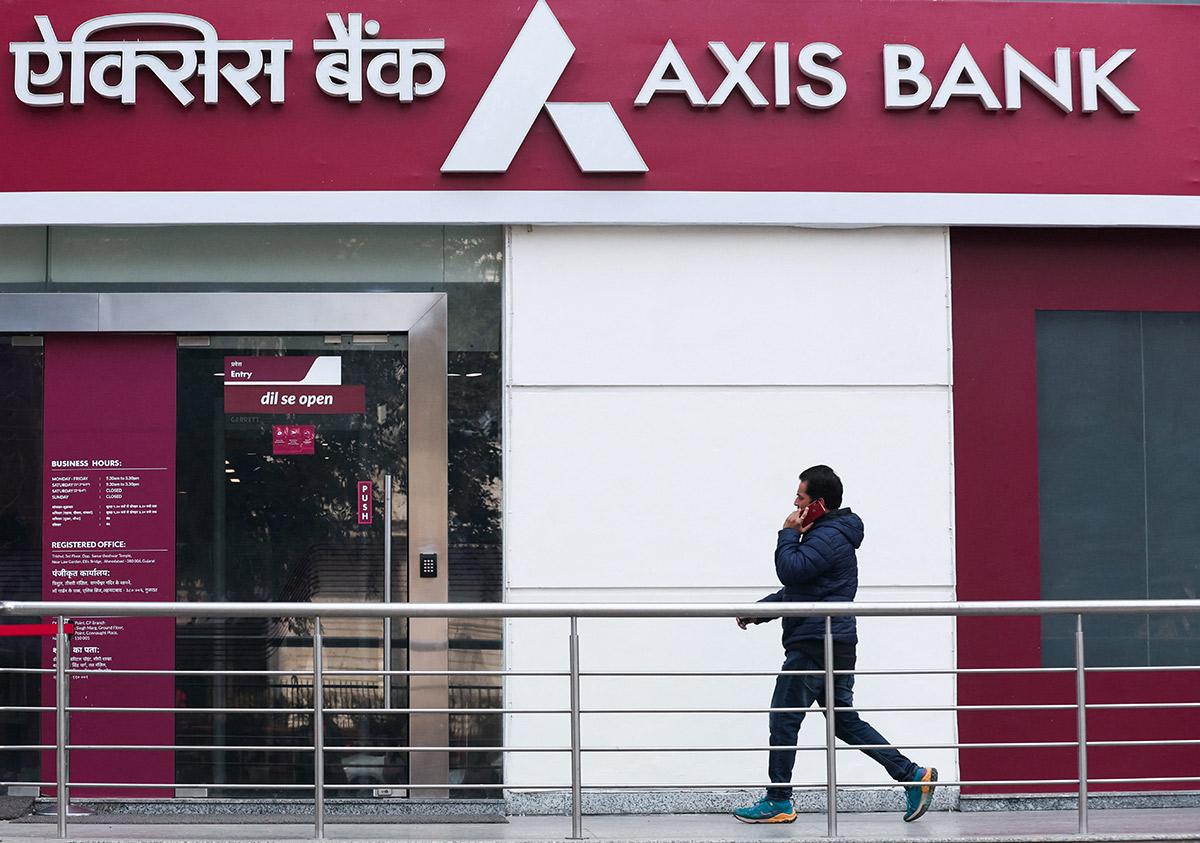‘BSE has facilitated nearly Rs 35 trillion in capital raising across multiple segments.’

IMAGE: People watch the live telecast of Union Budget 2025 presented by Finance Minister Nirmala Sitharaman outside the Bombay Stock Exchange. Photograph: ANI Photo
BSE is “at the forefront” of economic growth and enables companies to raise capital and investors to access markets, said Sundararaman Ramamurthy, the managing director and chief executive officer of the exchange that is celebrating its 150th anniversary.
BSE is working to “leapfrog the next level of market development”, Ramamurthy, who assumed his role at BSE in January 2023, tells Samie Modak/Business Standard in an e-mail interview.
BSE is celebrating its 150th anniversary. Can you take us through the exchange’s legacy and its role in the Indian economy and market ecosystem?
BSE embarked on its 150-year journey as The Native Share and Stock Broker’s Association on July 9, 1875. It subsequently became the first recognised stock exchange in the country under the Securities Contract Regulations Act (SCRA), 1957.
The exchange underwent demutualisation and corporatisation in 2007, and in 2017, it became the first exchange to get listed.
Over these years, BSE has profoundly shaped India’s capital market ecosystem through foundational, regulatory, and technological contributions.
Starting from informal gatherings under a banyan tree, BSE has provided a vast canopy for the capital market ecosystem in India.
It has been at the forefront of capital mobilisation, economic growth, employment generation, and wealth creation by enabling thousands of companies to raise capital and millions of investors to access the markets.
BSE works closely with regulators to bring in updated and best practices, ensuring a robust and transparent market environment.
BSE has driven innovation and growth through several key initiatives.
These include implementing the online trading system for seamless trading experiences, fostering entrepreneurship through the SME platform, encouraging household savings through the StarMF platform and promoting awareness via the BSE Investor Protection Fund.
While BSE is old, with a 150-year legacy, it remains nimble and young to embrace new ideas, adopt innovation and work to leapfrog into the next level of market development as the country looks towards achieving Viksit Bharat status by 2047.
It has become so easy to open a trading account. How has the regulatory architecture evolved?
Trading in stocks has indeed come a long way, transitioning from the shades of a banyan tree to the convenience of smartphones.
BSE has been instrumental in democratising access, building trust, and providing investor protection.
This transformation is a result of the evolution of the regulatory architecture.
Paper-based trading of the 19th century was formally regulated under the Bombay Securities Contract Control Act in 1925.
Post-independence, SCRA 1957 brought structure to the capital market ecosystem, while the Securities and Exchange Board of India (Sebi) Act of 1992 introduced a formal regulatory framework.
Today, the regulatory process in India is a collaborative effort aimed at enhancing the ecosystem for market participants and investors.
Key milestones include the introduction of dematerialised accounts in 1996, which enabled online trading, and the standardisation of KYC and account opening norms.
Other advancements include digital onboarding, direct payouts to investor demat accounts, simplified nomination and inheritance processes, enhanced risk management measures, and a reduction in settlement days to T+0.
These changes have seamlessly integrated banking, broking, and mobile investing ecosystems, leading to a surge in retail participation.
For instance, unique client codes at BSE have surged from 50 million in 2020 to nearly 220 million as of the latest count, while mutual fund folios have increased from 90 million to 220 million during the same period.
What role does an exchange play in capital formation and economic growth?
Stock exchanges are fundamental to economic development as they provide businesses with the capital needed for growth, innovation, and job creation.
Exchanges offer platforms for raising capital, transparent secondary markets, and liquidity.
Listed companies gain visibility, enabling further capital raising, while exchanges ensure minimum corporate governance standards and risk management.
They also channel foreign capital into markets, providing equal access and fostering financialisation and wealth creation.
In the past two financial years (FY24 and FY25), BSE has facilitated nearly Rs 35 trillion in capital raising across multiple segments.
Platforms like BSE SME and BSE Social Stock Exchange support smaller and social-impact enterprises, contributing to economic growth.
Sensex is synonymous with investing in India. What’s the plan to cultivate its brand image?
The BSE Sensex is the barometer of the Indian economy and capital markets, serving as a benchmark and reflecting market sentiment.
It influences foreign inflows as international investors closely monitor the index to assess the country’s economic potential.
Beyond the traditional function of sentiment analysis, the index also presents risk management and investment opportunities through derivatives and index funds.
To cultivate the Sensex brand, we will continue to refine product strategies in line with industry trends and consumer preferences while staying true to our core values.
This approach ensures the index remains relevant and valuable to capital market participants.
Penetrating the derivatives market was thought to be impossible. BSE has challenged this notion. How has the exchange managed to gain ground in the derivatives segment?
BSE’s focus has always been on providing the best products and services to meet the needs of domestic and foreign investors.
Market-share growth from almost nothing two years ago to nearly 25 per cent as of the latest count is a byproduct.
Initially, BSE faced challenges such as a lack of a level playing field and technical readiness among brokers.
We addressed these by investing in high-speed, low-latency infrastructure and enhancing transparency and confidence.
‘Voice of the Customer’ was critical for launching Sensex 30 and Bankex, which helped overcome multiple challenges to create a growth environment.
These efforts have paid off, with the Sensex index derivative becoming the world’s fastest-growing derivatives contract.
Despite regulatory measures impacting derivatives volume, BSE remains committed to providing a cohesive capital ecosystem that meets the growing demands of the dynamic capital market.
Recent Sebi measures have impacted derivatives volume. What’s the outlook?
Sebi’s measures are aimed at ensuring market protection and encouraging better participation.
Derivatives are versatile instruments used for hedging risks, bringing market stability, and expressing investment strategies.
The reforms are designed to ensure these instruments meet their economic purposes correctly.
How is the exchange landscape evolving? What could this space look like in 10 years?
The Indian economy is projected to reach $30 trillion by 2047, up from $4.2 trillion.
A similar growth trajectory is expected for the stock market capitalisation, which is currently at $5.4 trillion for all BSE-listed companies.
This growth will mean greater integration with global markets and higher penetration of capital markets.
Exchanges must be dynamic and agile, ready to adapt to this ever-changing world.
The next decade may see more sophisticated technology, multiple asset classes, deeper market penetration, and wider population coverage, leading to a bigger and more significant role for exchanges.
How have things evolved on the technology side?
Technology has been a driving force in the growth of capital markets, moving from ring-based trading to brokers’ offices, customer computers, and now mobile phones.
It has also extended trading hours and increased transaction volumes.
BSE has heavily invested in updating its technology stack to meet rising processing demands and future-proof its operations.
This includes adopting cutting-edge technology to ensure efficient, transparent, and secure trading.
We are also leveraging AI and machine learning for enhanced market surveillance, risk management, and investor experience.
For example, AI is used in DRHP (Draft Red Herring Prospectus) document processing for pre-IPO checks and BSE SME platform filings, improving accuracy and efficiency.
Any comments on the need for competition in the exchange space?
Competition in any space is crucial for avoiding concentration risk, fostering efficiency, innovation, and overall market health while monopoly might lead to deterioration of corporate governance and the voice of customers getting stifled.
The stock market and capital market space are no alien to this concept especially when we are seeing surge in investor participation from households.
Healthy competition helps improve service quality, encourage innovation, increased transparency, market integrity and wider choice for the industry at large which is a win-win for the ecosystem.
Feature Presentation: Aslam Hunani/Rediff




